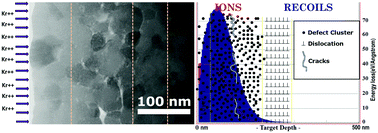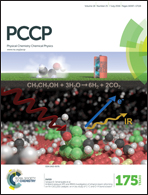Irradiation-induced grain growth and defect evolution in nanocrystalline zirconia with doped grain boundaries†
Abstract
Grain boundaries are effective sinks for radiation-induced defects, ultimately impacting the radiation tolerance of nanocrystalline materials (dense materials with nanosized grains) against net defect accumulation. However, irradiation-induced grain growth leads to grain boundary area decrease, shortening potential benefits of nanostructures. A possible approach to mitigate this is the introduction of dopants to target a decrease in grain boundary mobility or a reduction in grain boundary energy to eliminate driving forces for grain growth (using similar strategies as to control thermal growth). Here we tested this concept in nanocrystalline zirconia doped with lanthanum. Although the dopant is observed to segregate to the grain boundaries, causing grain boundary energy decrease and promoting dragging forces for thermally activated boundary movement, irradiation induced grain growth could not be avoided under heavy ion irradiation, suggesting a different growth mechanism as compared to thermal growth. Furthermore, it is apparent that reducing the grain boundary energy reduced the effectiveness of the grain boundary as sinks, and the number of defects in the doped material is higher than in undoped (La-free) YSZ.


 Please wait while we load your content...
Please wait while we load your content...